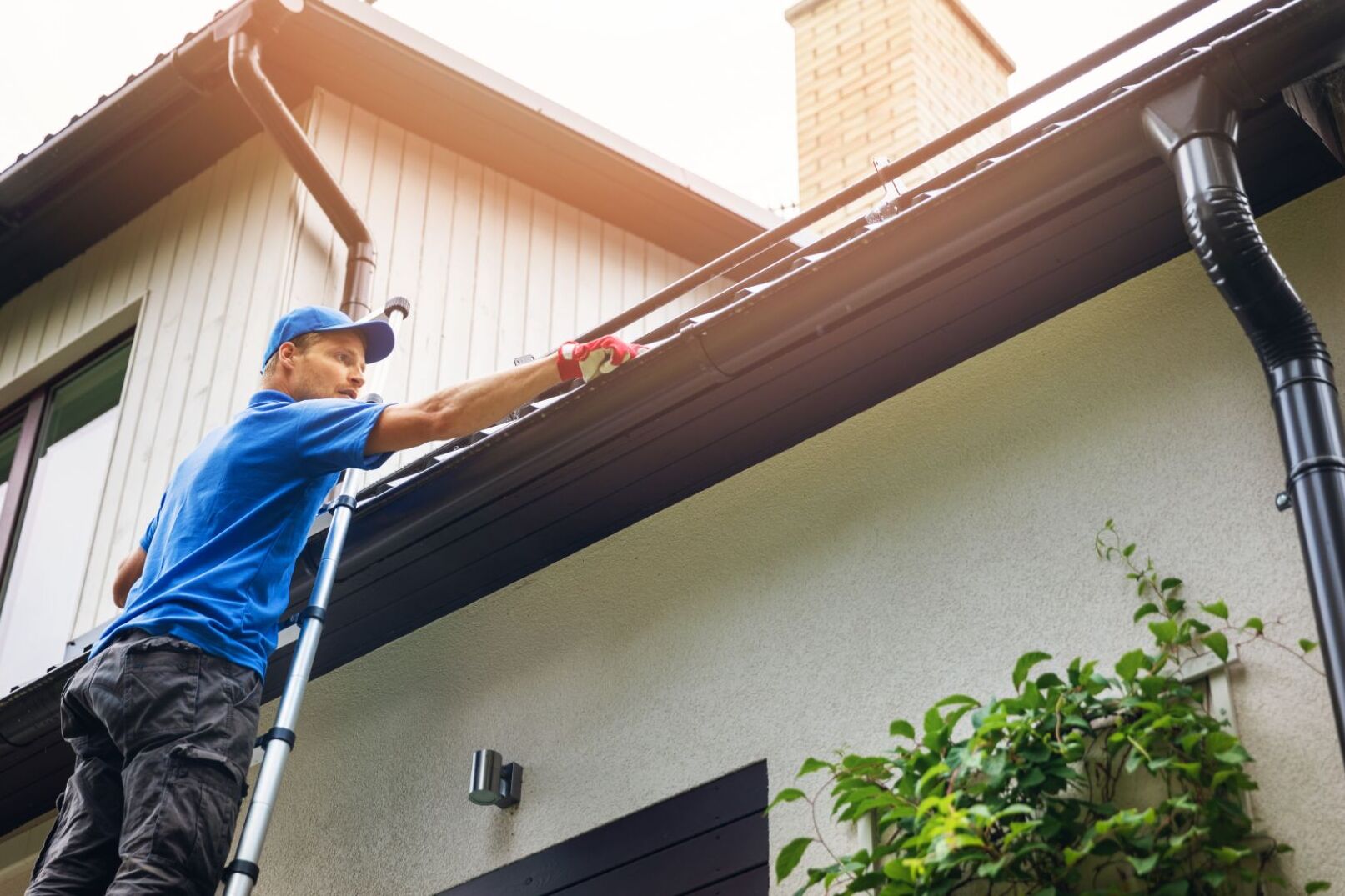
How to Prepare Your Home for Gutter Installation: Tips and Best Practices
Gutters are an essential component of your home’s roofing system, directing rainwater away from the foundation and preventing water damage. Properly installed gutters protect your home from soil erosion, basement flooding, and structural damage. Before embarking on a gutter installation project, it’s crucial to prepare your home adequately. This comprehensive guide will walk you through the steps to prepare your home for gutter installation, ensuring a smooth and successful process.
Understanding the Importance of Gutters
Before diving into the preparation process, it’s essential to understand why gutters are so important. Gutters collect rainwater from the roof and channel it away from the house, protecting the foundation, siding, and landscaping from water damage. Without functional gutters, water can pool around your home’s foundation, leading to structural issues, mold growth, and even basement flooding.
Assessing Your Home’s Needs
Evaluate Your Current Gutters
If you already have gutters, start by evaluating their condition. Look for signs of wear and tear, such as rust, cracks, sagging, or leaks. Determine whether your existing gutters can be repaired or if a complete replacement is necessary.
Measure Your Roof
Accurate measurements are crucial for determining the amount of gutter material you’ll need. Measure the length of your roofline, including any corners and downspouts. Consider hiring a professional to take precise measurements, especially if your roof has multiple levels or complex angles.
Determine the Right Gutter Type
Gutters come in various materials, styles, and sizes. Common materials include aluminum, steel, vinyl, and copper. Each material has its pros and cons:
- Aluminum: Lightweight, rust-resistant, and affordable.
- Steel: Strong and durable but prone to rust if not properly maintained.
- Vinyl: Inexpensive and easy to install but less durable in extreme weather conditions.
- Copper: Long-lasting and visually appealing but expensive.
Choose the material that best suits your budget, climate, and aesthetic preferences. Additionally, decide on the gutter style (K-style, half-round, or box) and size (typically 5 or 6 inches).

Preparing for Installation
Gather Necessary Tools and Materials
Ensure you have all the tools and materials needed for the installation process. These may include:
- Tape measure
- Ladder
- Chalk line
- Level
- Hacksaw or tin snips
- Drill and screws
- Gutter hangers and brackets
- Downspout extensions
- Sealant or caulk
Having all the necessary tools and materials on hand will make the installation process smoother and more efficient.
Check Local Building Codes
Before installing new gutters, check with your local building authority to ensure compliance with building codes and regulations. Some areas have specific requirements for gutter installation, including the type of materials allowed and the placement of downspouts. Obtaining the necessary permits and adhering to local codes will prevent potential legal issues down the line.
Inspect Your Roof and Fascia
Inspect your roof and fascia (the board to which gutters are attached) for any signs of damage or rot. Repair any issues before installing the new gutters to ensure a stable and secure installation. A strong and intact fascia will provide a solid foundation for the gutters, preventing sagging and detachment over time.
Clear the Work Area
Ensure the area around your home is clear of obstacles, such as outdoor furniture, landscaping, and vehicles. This will provide a safe and accessible workspace for you or the installation team. Clearing the area will also protect your belongings from potential damage during the installation process.
Protect Landscaping
Gutter installation can be messy, with debris and materials potentially falling onto your landscaping. Cover plants and shrubs with tarps or drop cloths to protect them from damage. Additionally, consider installing temporary barriers to keep children and pets away from the work area.

The Installation Process
Mark the Gutter Slope
Proper drainage is essential for effective gutter performance. To ensure water flows correctly, gutters must be installed with a slight slope toward the downspouts. Use a chalk line to mark the slope, aiming for a downward pitch of about 1/4 inch for every 10 feet of gutter. This will help prevent standing water and ensure efficient water flow.
Install Gutter Hangers and Brackets
Gutter hangers and brackets provide support and stability for the gutters. Install them along the chalk line, spacing them about 2 feet apart for aluminum and vinyl gutters, and about 3 feet apart for steel and copper gutters. Ensure the hangers are securely fastened to the fascia, as this will prevent sagging and ensure the gutters remain in place during heavy rainfall.
Cut and Assemble the Gutters
Measure and cut the gutter sections to fit the length of your roofline. Use a hacksaw or tin snips to make clean cuts, and file down any rough edges. Assemble the sections on the ground, connecting them with gutter connectors or by overlapping the ends and sealing them with gutter sealant. Ensure the joints are secure and watertight to prevent leaks.
Attach the Gutters
Carefully lift the assembled gutter sections and attach them to the hangers and brackets. Ensure the gutters are aligned with the chalk line and maintain the correct slope. Secure the gutters in place with screws, checking for any gaps or misalignments that could affect water flow.
Install Downspouts
Downspouts channel water from the gutters to the ground, directing it away from your home’s foundation. Install downspouts at the corners of the house or at strategic points along the roofline. Attach downspout elbows to the gutter outlets and connect the downspout sections, securing them with screws. Ensure the downspouts are firmly attached to the house with brackets and extend at least 3 to 4 feet away from the foundation to prevent water damage.

Seal and Test the System
Once the gutters and downspouts are installed, apply sealant or caulk to all joints and connections to ensure a watertight seal. Test the system by running water through the gutters and checking for any leaks or areas where water may not be flowing correctly. Make any necessary adjustments to ensure optimal performance.
Post-Installation Maintenance
Regular Cleaning
To maintain the efficiency of your new gutters, clean them regularly to remove leaves, debris, and dirt. Clogged gutters can lead to water overflow, damaging your roof, fascia, and foundation. Consider installing gutter guards to reduce the frequency of cleaning and prevent clogs.
Inspect for Damage
Periodically inspect your gutters for signs of damage, such as cracks, sagging, or loose brackets. Promptly address any issues to prevent further damage and ensure the longevity of your gutter system. Regular inspections will help you catch problems early and avoid costly repairs.
Check for Proper Drainage
After heavy rain or snowfall, check your gutters and downspouts for proper drainage. Ensure that water is flowing away from your home’s foundation and not pooling around the downspouts. Adjust the downspout extensions if necessary to improve water flow and prevent foundation damage.

Maintain the Roof and Fascia
Regularly inspect and maintain your roof and fascia to ensure they remain in good condition. Repair any damage promptly to provide a stable foundation for your gutters. A well-maintained roof and fascia will help your gutter system function efficiently and extend its lifespan.
Schedule Professional Inspections
Consider scheduling annual inspections with a professional gutter installer. They can identify potential issues, provide maintenance recommendations, and ensure your gutter system remains in optimal condition. Professional inspections will give you peace of mind and help you avoid unexpected problems.
Preparing your home for gutter installation is a critical step in ensuring a successful and efficient project. By evaluating your current gutters, measuring your roof, choosing the right materials, and following best practices for installation, you can protect your home from water damage and improve its overall appearance.
Budgeting for Gutter Installation
Budgeting for gutter installation is a crucial part of the preparation process. Understanding the costs involved and planning your finances accordingly can help you avoid unexpected expenses and ensure a smooth installation. Here’s a detailed look at how to budget for gutter installation, including factors that affect costs and tips for staying within your budget.

Factors Affecting Gutter Installation Costs
Gutter Material
The material you choose for your gutters will significantly impact the overall cost. Here’s a breakdown of common gutter materials and their price ranges per linear foot:
- Aluminum: $4 to $10 per linear foot. Aluminum gutters are lightweight, rust-resistant, and affordable, making them a popular choice for many homeowners.
- Vinyl: $3 to $5 per linear foot. Vinyl gutters are the most budget-friendly option but may not be as durable as other materials.
- Steel: $8 to $12 per linear foot. Steel gutters are strong and durable but can be prone to rust and require regular maintenance.
- Copper: $15 to $25 per linear foot. Copper gutters offer a unique, attractive look and are highly durable but come with a higher price tag.
Gutter Style and Size
The style and size of the gutters also affect the cost. K-style and half-round gutters are common styles, with K-style generally being more affordable. The size, typically 5 or 6 inches, will depend on your home’s specific needs and can influence the price as larger gutters require more material.
Labor Costs
Labor costs vary based on the complexity of the installation and the contractor’s rates. On average, labor costs for gutter installation range from $5 to $10 per linear foot. If your home has multiple stories, steep roofs, or complex architectural features, labor costs may be higher.
Additional Components
Additional components, such as downspouts, elbows, hangers, and brackets, add to the overall cost. Downspouts typically cost $5 to $8 per linear foot, while hangers and brackets can range from $2 to $5 each. Don’t forget to factor in these costs when budgeting for your gutter installation.
Removal and Disposal of Old Gutters
If you’re replacing old gutters, consider the cost of removal and disposal. Contractors may charge an additional fee for this service, typically around $1 to $2 per linear foot. This fee covers the labor involved in removing the old gutters and properly disposing of the materials.

Tips for Budgeting
Get Multiple Quotes
Obtain quotes from at least three different contractors to compare prices and services. Ensure that each quote includes a detailed breakdown of material costs, labor, and any additional fees. This comparison will help you identify a fair price and select the best contractor for your project.
Plan for Contingencies
It’s wise to allocate an additional 10-15% of your budget for contingencies. Unexpected issues, such as hidden water damage or the need for additional materials, can arise during the installation process. Having a contingency fund ensures you’re prepared for any surprises.
Choose Quality Over Cost
While it may be tempting to choose the cheapest option, investing in high-quality materials and experienced contractors will pay off in the long run. Quality gutters and professional installation will provide better performance, durability, and fewer maintenance issues over time.
Consider DIY Installation
If you have the skills and experience, installing gutters yourself can save on labor costs. However, ensure you’re confident in your abilities and understand the complexity of the project. Mistakes in installation can lead to costly repairs and potential water damage to your home.
Look for Discounts and Promotions
Many gutter installation companies offer discounts or promotions, especially during the off-season. Keep an eye out for these deals to reduce your overall costs. Additionally, some manufacturers offer rebates on specific gutter materials, providing further savings.

Financing Options
Personal Savings
Using personal savings to finance your gutter installation is the most straightforward option. It allows you to avoid interest payments and debt. Plan ahead and save for the project to ensure you have enough funds to cover the costs.
Home Equity Loans or Lines of Credit
Home equity loans or lines of credit (HELOCs) can be a good option for financing home improvement projects, including gutter installation. These loans typically offer lower interest rates than personal loans or credit cards and can provide the necessary funds for larger projects.
Personal Loans
Personal loans are another financing option, especially if you don’t have sufficient home equity. These loans can be obtained from banks, credit unions, or online lenders. Compare interest rates, terms, and fees to find the best option for your needs.
Credit Cards
Using a credit card to finance your gutter installation can be convenient, but it’s essential to consider the interest rates and potential for accumulating debt. If you choose this option, look for credit cards with promotional interest rates or rewards programs to maximize benefits.
Budgeting for gutter installation involves understanding the various costs associated with materials, labor, and additional components. By obtaining multiple quotes, planning for contingencies, and choosing quality materials and contractors, you can ensure a successful and cost-effective gutter installation project.
